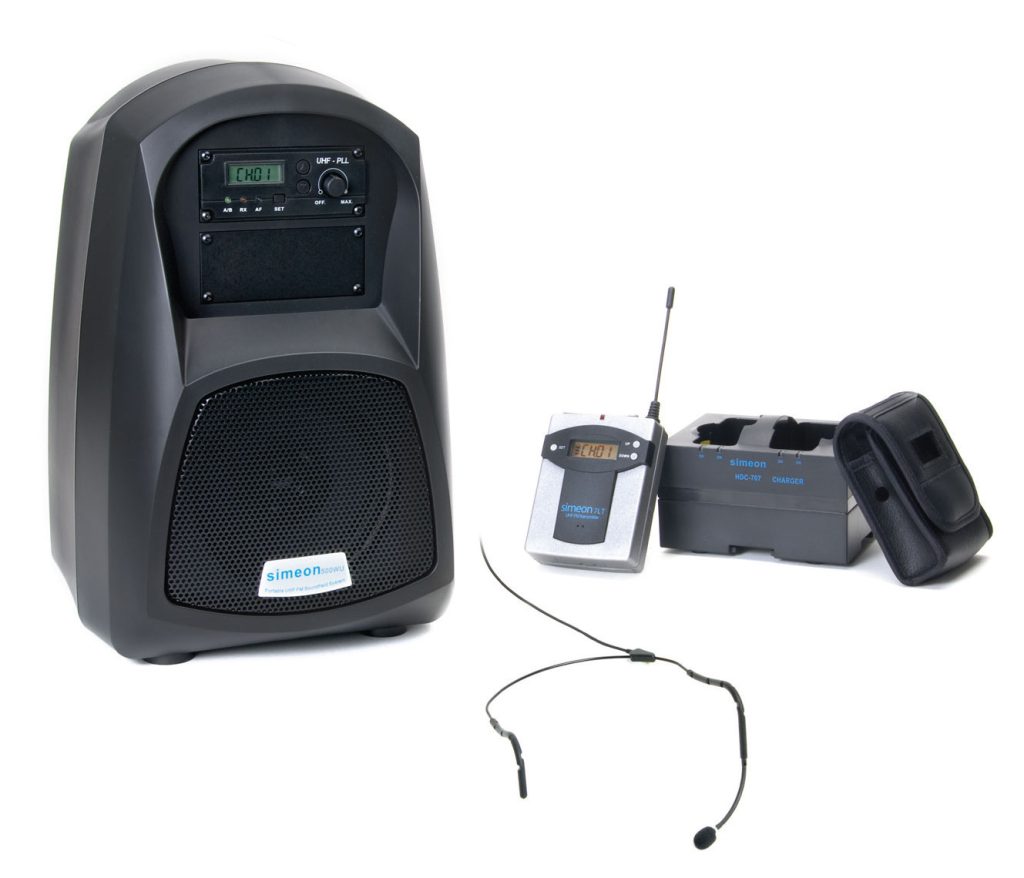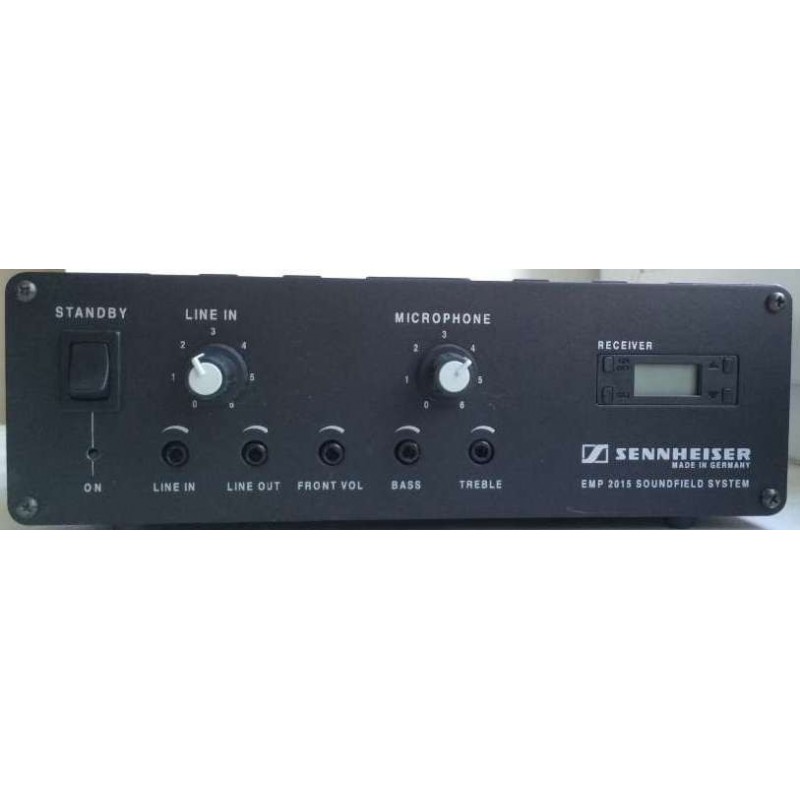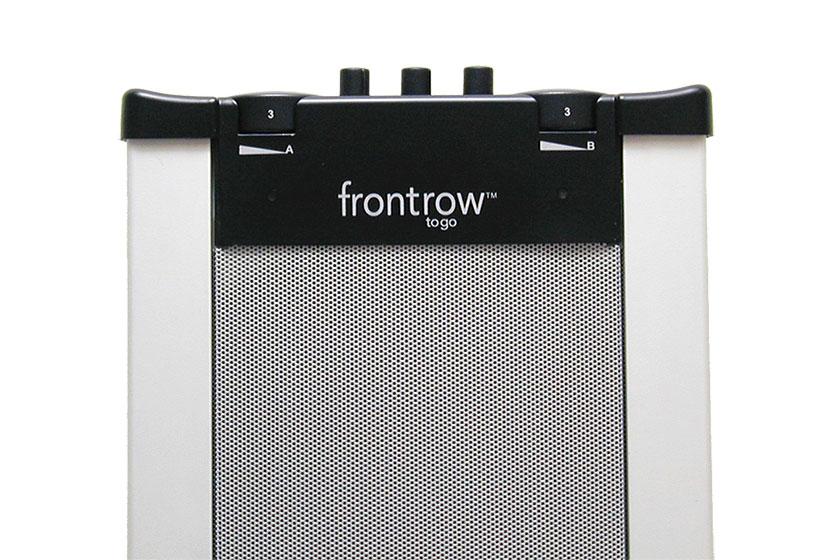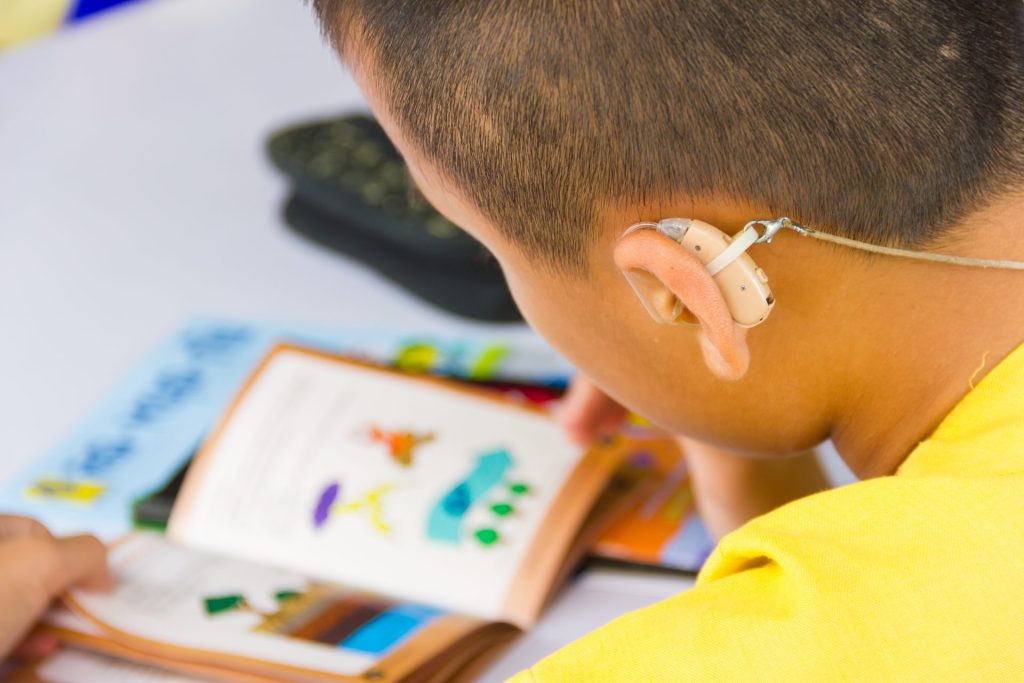Inuit children have one of the highest prevalence of hearing loss in the world, mainly due to middle ear infections”
(Oreille Bionique, 2023)
At Kativik Ilisarniliriniq, we are leveraging school interventions that ensure proper hearing care for children living with hearing loss.
That’s why most of our classrooms are equipped with a sound-field systems. In this article, you will discover useful information you will need in order to use system effectively.

Sound-field systems promote inclusivity in the classroom by ensuring that all students, regardless of their physical location or hearing ability, have equal access to the teacher’s voice.
What is a Sound-field System ?
A sound-field system is a technology that amplifies the teacher’s voice and distributes it evenly throughout the classroom, making it easier for all students to hear and understand the instruction. It typically consists of a microphone worn by the teacher and speakers strategically placed around the classroom.
It can support all students! In fact, using this tool will ensure that they hear much more clearly. If you start using it on a day-to-day basis, your students will ask for it if you ever forget.
Below, you will find the existing models you may find at your school.

Roger Dynamic Sound-field
It’s one of the most recent model purchased by the school board and it’s a mobile sound field system. The Roger Dynamic Sound-field system is typically straightforward to set up and use.

Simeon 500 WU
It’s a mobile soundfield system.

Sennheiser EMP 2015
It’s one of the first model of soundfield system purchased by the school board and it’s mainly permanent in the classroom.

FrontRow ToGo
It’s a mobile soundfield system.
Benefits for students
The benefits of the system are not only for children with hearing problems, but for all students.
- Improved sentence recognition ability
- Increased student attention, interaction and participation
- Quicker acquisition of reading, writing and numeracy skills
- Easier deciphering of language in early learning years
- Better understanding of teacher and is especially helpful for students acquiring a second or third language.
Younger listeners can’t fill in the blanks. They also may find it more challenging to concentrate when they cannot hear the teacher clearly. A sound field system can help maintain their attention and engagement during lessons.

Combine auditory learning with visual aids to reinforce the content. Utilize slides, diagrams, videos, and other visual materials to enhance comprehension for all students, including those with different learning styles.
One of the characteristics of Inuit learners is that they learn primarily through sight and observation. We strongly encourage you to use visual facilitators in addition to the sound-field system.
Need Help using your Sound-field system?
The first step is following the online training proper to the system model of your classroom. You can find training on the Tusaajuit website. You can also ask for help or for more information to the members of your local Complementary Services team. Your school may have already designated a resource person for sound-field systems.
Tusaajuit classses
Maintenance
An audiologist should be available twice per year in most villages during the school year for further maintenance and support.
Useful usage tips are provided below!
You can also ask for help from the designated person in your school or contact the CCS team as a last resort.
Teacher buy-in
This is the most important requirement!
Your collaboration is the key component to ensure that all our students are provided a classroom environment that is most favorable for learning.
When should I use my sound field system?
- When you are giving explanations for a task.
- During lecture periods.
- When you are reading a story.
- You could pass the microphone around to students when they are talking about their weekend, when they are doing an oral explanation, etc.
When should I turn it off?
- When you are discussing something with a staff member.
- When students are doing something more hands-on and you are acting like a support figure.
- Don’t forget to turn it off at the end of the day.

Tips for using your Sound-field system
Tip 1
Familiarize yourself with the system: Before using the sound field system in the classroom, take time to learn how to operate the system effectively. Practice using the microphone and adjusting the volume levels to find the optimal settings for your classroom.
Practice with colleagues: If other teachers in your school use sound field systems, consider practicing with them or sharing tips and experiences. Collaboration can lead to valuable insights and best practices.
Tip 2
Position the microphone properly: Wear the microphone consistently in the same position, preferably close to your mouth but not directly in front of it. This placement ensures that your voice is picked up clearly without any muffled or distorted sounds.
Tip 3
Speak naturally: The sound-field system is designed to amplify your voice, so there’s no need to shout or strain your voice. Speak in your normal tone and pace, and the system will do the rest.
Tip 4
Encourage student participation: Remind your students about the sound field system and its benefits. Encourage them to ask questions and participate actively in discussions. This will not only improve their engagement but also allow you to gauge whether the system is working well for everyone.
Seek student feedback: Ask students if they can hear you clearly and if the sound field system is beneficial to them. Their feedback can help you fine-tune the system’s settings and identify any potential issues.
Tip 5
Be mindful of background noise: While the sound field system can help overcome background noise to some extent, try to minimize unnecessary noise in the classroom. Close windows and doors if possible and ask students to avoid talking while you’re teaching.
Tip 6
Create seating flexibility: Arrange the seating in your classroom to ensure that all students have a clear line of sight to the speakers. This way, they can hear your voice directly and indirectly through the sound field system without obstruction.
